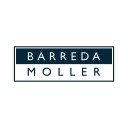What is a generic mark for peruvian caselaw?

Published byBarreda Moller

Article 135 paragraph f) of Decision 486, Industrial Property Common Regime, establishes that may not be registered as trademarks those marks which, consist exclusively of a sign or indication which is the generic or technical name of the good or service concerned.
The marks to which Article 135 paragraph f) of Decision 486 refers are the so-called generic marks.
The generic indication or denomination is the one that designates the genus, a species or the good or service which is purported to be distinguished by the indication or denomination. (FERNÁNDEZ-NOVOA, Carlos. Tratado sobre Derecho de Marcas. Madrid: Marcial Pons, 2001. page125).
There is double reason for prohibiting the trademark registration of generic marks. On the one hand, generic marks must be freely usable by all competitors acting in one market sector because if generic marks are registered in the name of one competitor exclusively, the other competitors will be prevented from using such generic marks to refer to goods or services they manufacture, commercialize or render. On the other hand, generic marks lack enough distinctiveness to differentiate the goods or services of a competitor from those of other competitors. (Indecopi. Compendio de Jurisprudencia Sala de Propiedad Intelectual (Caselaw Compendium – Intellectual Property Division) (1996-1999). Volume I. Pages 32-33).
Now, Article 135 paragraph f) of Decision 486 only states that signs or indications that are the generic or technical name of the good or service concerned are generic marks.
However, scholarly writings and Peruvian caselaw consider that the following are also generic marks:
(i) Denominations that constitute the genus of the goods or services concerned. (Decision Nº 1592-2015/TPI-INDECOPI of April 10, 2015 rendered by the Intellectual Property Division of the Administrative Court of Indecopi).
For example, “FURNITURE” to distinguish “chairs” in class 20 of the Nice Classification.(PACHÓN, Manuel y SANCHEZ, Zoraida. El régimen andino de la propiedad industrial. Santa Fe de Bogotá, D.C.: Gustavo Ibáñez, 1995. Page 210).
(ii) Phonetic or graphic variations of generic denominations. (Decision Nº 1643-2016/TPI-INDECOPI of May 26, 2016 rendered by the Intellectual Property Division of the Administrative Court of Indecopi).
Such is the case of the application for registration of trademark PANETONYS to distinguish “panetones” in class 30 of the Nice Classification. The registration of this trademark was denied by means of Decision No. 1199-2010/TPI-INDECOPI of May 31, 2010, since the proposed mark was a variation of the term PANETONES which is the generic name of the goods that the proposed mark intended to distinguish.
Such was also the case of the application for registration of trademark PROTOCITOQUININAS to distinguish “chemicals used in horticulture and forestry, among other goods” in class 1 of the Nice Classification. The registration of this trademark was denied by means of Decision No. 6908-2007/OSD-INDECOPI of April 24, 2007 rendered by the Trademark Office and confirmed by the Administrative Court, since the proposed mark was deemed a variation of the term CITOQUININAS which is the technical name of a “chemical usedin horticulture and forestry”, namely a “plant hormone produced by plants, which, among other things, promotes growth”.
(iii) Designs that evoke in consumers’ mind the same concept as a generic denomination does. (FERNÁNDEZ-NOVOA, Carlos. Op.cit. Page 125).
For instance, such was the case of the application for registration of trademark “Rope representation in two colors” to distinguish “ropes, cables and wires of metal, among other goods” in class 6 of the Nice Classification. The registration of this trademark was denied by means of Decision Nº 484-97-TRI-SPI of August 1, 1997, given that the proposed mark was considered a generic design of several of the goods that said mark intended to distinguish, such as “ropes, cables and wires”.
In light of the aforementioned, it must be taken into account that, for Peruvian caselaw, the prohibition of granting trademark registration for generic marks, stated in Article 135 paragraph f) of Decision 486, not only includes the signs or indications which are the generic or technical name of the good or service concerned, as said article expressly states, but also (i) denominations that constitute the genus of the goods or services concerned, (ii) phonetic or graphic variations of generic denominations and (iii) designs that evoke in consumers’ mind the same concept as a generic term does.

